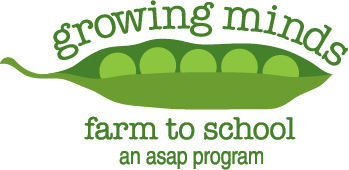Brief Description: Students discuss warm and cool season plants, as well as which plants might need a “head start” inside. Students plant seeds in six pack containers and make predictions. This lesson plan is correlated for third grade but can be modified for other grades as well.
Objectives:
- Students work together to mathematically divide up flats
- Students are introduced to the life stages of plants
- Students examine the basic needs of seeds and plants and the influence of environmental factors
- Students have a hands on experience planting seeds, as well as making observations and predictions
Materials: Seeds, soil, six-pack containers, squirt bottles with water, garden journals, rulers, Popsicle sticks and markers for labeling
NC Standard Course of Study Goals for third grade:
Science –1.01, 1.02, 1.03, 1.04, 1.06, 2.03
English Language Arts – 2.08
Math – 1.03, 2.02
Getting Started / Procedure
- Begin by asking students what they think it means to be a cool or warm season plant? Give examples of each. Cool – snow peas, lettuce, spinach, warm – tomatoes, cucumbers, peppers. If students ask about a particular plant and you don’t know, look on the seed pack or tell them it would be something for them to find out and come share with the class. Talk to students about the growing season, and how depending on where you live you might have a longer or shorter growing season. What could you do if you live in the mountains of NC and have a shorter growing season than California? Plants such as lettuce, spinach, and peas grow fast and can be planted early in the spring. Other plants need a longer season to grow and produce a fruit or vegetable, such as tomatoes, peppers and eggplant.
- We are going to give some warm season plants a head start by starting them inside and putting them out when it is warmer. What do we need to provide for these seeds to grow into plants? Talk about what the differences are between what seeds need and what sprouts need.
- Tell students that we have enough seeds and soil for 2 flats per class. Have students determine how many mini containers there is for the whole class. How many students are in the class? How many seeds do each child get to plant? If they worked together in small groups how many could each group plant? Help the students work through the math as a group and then divide the students into small groups and let them choose a type of seed to plant, from those provided. Have them read the directions on the back and write in their garden journal – what type of seed are they planting (draw what seed looks like, and measure it’s size), how deep it is suppose to be planted, the germination temperature and when it is suppose to be planted outside.
- Students should estimate the depth to plant seeds and work together to plant, water and label their seeds. For a simple fraction experiment have students plant 3 seeds in each mini container and make a prediction about what fraction of them will sprout. In their journals students should make two predictions- 1) How long will it take for the seed to sprout? 2) What will the sprout look like (draw a picture).
Extensions:
- Have kids put together a “how to start plants inside” book
- Read garden/seed books
- Have students research the seed they planted
- Create seed related math problems
